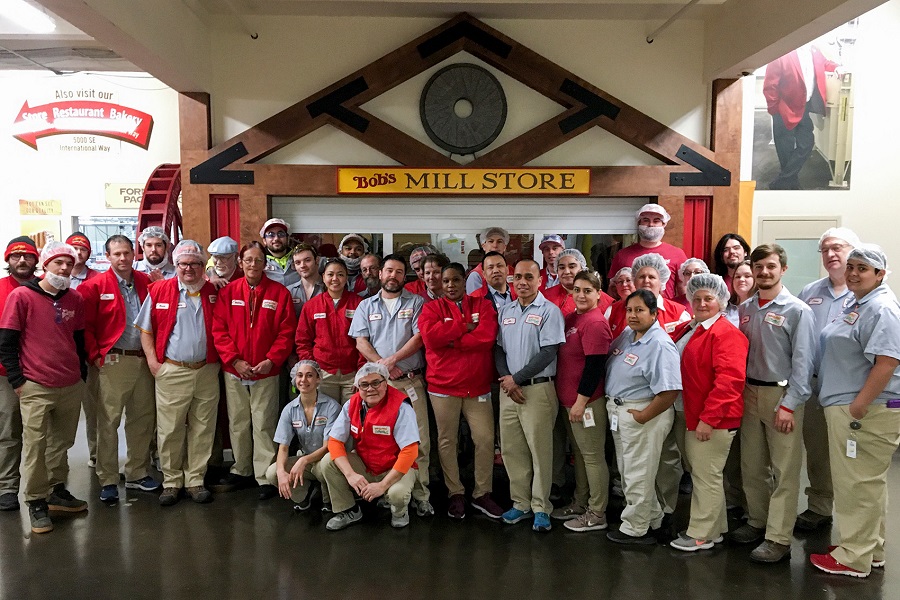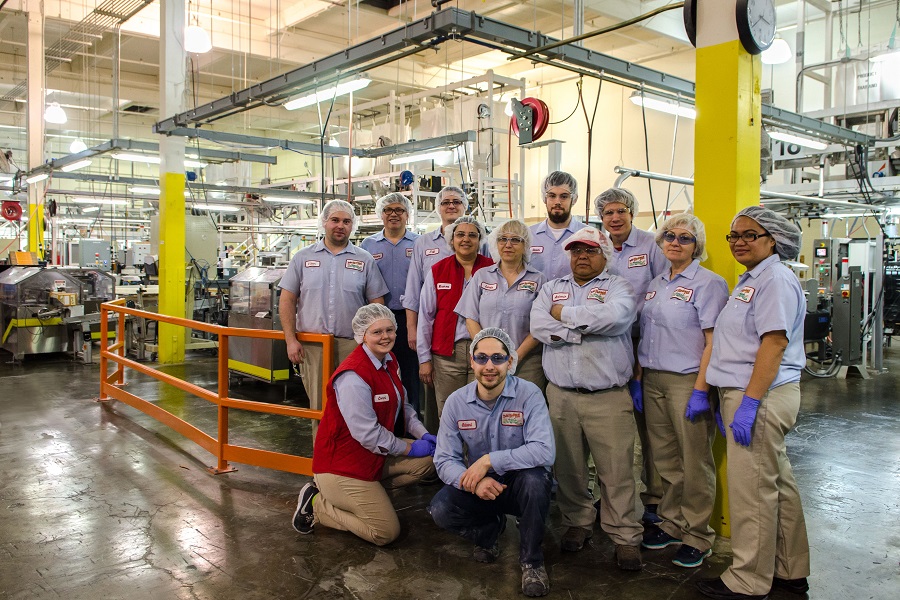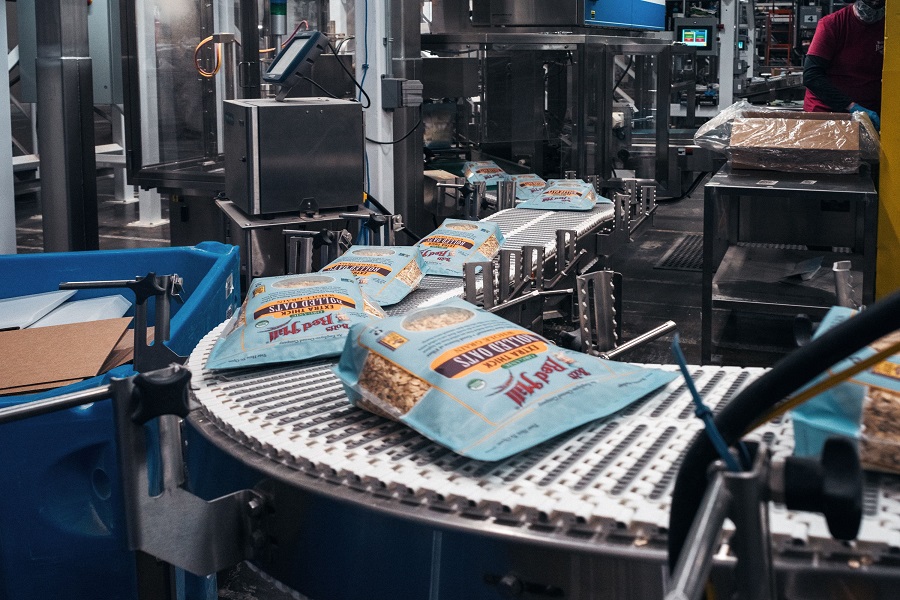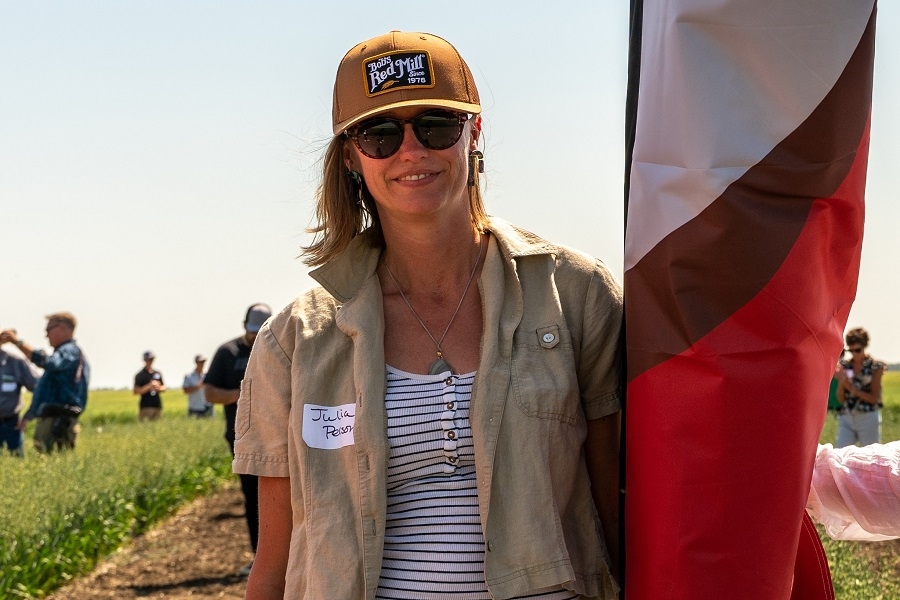Julia Person says an employee-selected change in conveyor belt technique resulted in a 70% reduction in wasted food
Between May and October in 2022, Milwaukie food producer Bob’s Red Mill participated in a case study with Pacific Coast Collaborative, the World Wildlife Fund, and sustainability consultant TripleWin Advisory, with the aim of generating employee-driven, ground-floor ideas for increasing company sustainability through a reduction in food waste.
According to the World Wildlife Fund food waste accounts for approximately 6%-8% of all human-caused greenhouse gas emissions – the carbon dioxide equivalent of 32.6 million cars.
The study, published through the World Wildlife Fund in December, found 22% of employees submitted food waste reduction ideas. For the study, Bob’s Red Mill chose to implement a conveyor belt technique which reduced oat overflow. The result was a 70% reduction in wasted food per pound of food produced on the line, according to the study.
Julia Person, sustainability manager at Bob’s Red Mill, tells Oregon Business the employee response, as well at the results of the study were better than the company could have imagined, and explained how employee-driven sustainability initiatives will be priority for the company moving forward.
This interview has been edited for length and clarity.

An employee group shot outside at the company’s Milwaukie mill. Credit: Bob’s Red Mill.
Why did Bob’s Red Mill choose to participate in the employee-driven case study?
First off, we are an employee-owned company and so engaging our employees in how we make decisions is important to us. We engage them and ask for their input and feedback on what they want to see us working on, and it was already a collective goal to cut food waste in half by 2030.
Being a food company and a leader in Oregon, food waste reduction is important for us to work on, but it’s something that you can take home, as well. With our sustainability programs, we want employees to be able to apply it not just in their work life, but their personal life. Helping to educate about food waste is something that folks can implement on their own, which also makes a huge impact on climate change.

An employee group in the company’s Milwaukie mill. Credit: Bob’s Red Mill.
The idea you implemented led to a 70% food waste reduction on a production line. Why was that particular idea chosen?
We got a high response rate — 176 employees submitted ideas — and we were really blown away by that. Being an employee-owned company means we all have a stake in it, so I think that helped with our success with the pilot study.
We selected it was a pretty simple, technical fix on how the products moves through our scale buckets as they’re being divvied into portions that go into our package. Tightening of the conveyance system prevented any overflow or spillover from those scale buckets.
This ensures more of our product ends up in our customers’ hands rather than as food waste, which of course has implications for the stream of our supply chain.
It was also a good one to select for the case study approach too, since it had the potential to demonstrate how these kinds of employee-led food reduction efforts can happen at very little cost to manufacturers.

Credit: Bob’s Red Mill.
How will this inform your sustainability efforts in the future?
We are going to implement this spillover-reducing approach across our lines that are like the one we fixed, and now we have all those other employee ideas we’re going to dig into. Using these ideas employees have come up with is going to be a huge focus for us in 2023.
We were impressed by how creative and innovative ideas from our employees were. What it shows is just how much we can empower employees by connecting them with the right tools. We needed the maintenance and engineering team to help implement this first idea, for example. An employee might not have been able to do that on their own.
This year, we’re kicking off our food waste reduction team, which is going to have representatives from across the company, and we’re going to start working on all those other opportunities that were gathered. We expect to see a significant reduction in food waste from those efforts, starting as soon as our ingredient arrives and all the way through to our packaging, production, milling, inventory, and warehousing. We’re going to really look at it holistically, and it’s a big goal for us this year.
What are the drivers of food waste, and what did this study reveal about how companies can approach food waste reduction?
Food waste is a pretty significant cost to companies and the environment. REfed has a lot of data on that, but I think what we learned about food waste in this study is that while in some cases you can install something new and shiny and spend money to prevent food waste, by-and-large, the best way to prevent food waste is by changing the way you’re already doing things. Just looking at our day-to-day behaviors and implementing smarter methods.
The employees who submitted ideas see the day-to-day operations out on the floor and given our business model, they are also kind of like the owners of this equipment, so they see opportunities. A lot of these improvements we intend to make can be low or no cost. It comes down to training and having the food waste prevention mindset across our team.
That’s why it’s so impactful to engage employees for sustainability drives because they’re really the eyes and ears of the company and know where these improvements can be made.
What happens next with the Pacific Coast Collaborative case study?
The idea behind the case study is that we can share it with other manufacturers because we’re all up against the same things. We are a part of the Pacific Coast Food Waste commitment, along with other manufacturers, food companies, retailers. The idea behind that coalition is that we’re able to share studies and best practices with each other, so that was a big driver behind doing this pilot and a case study.
The main thing that’s translatable to other food companies and manufacturers is the overall methodology we took in our food waste reduction campaign. The study lays out the steps we took to educate and engaged employees, as well as ask for ideas and then follow up about the implementation of those ideas. It’s more than just saying “here is the equipment we used and look how we made this tweak.”
We will be presenting the case study in more detail to companies at the Pacific Coast Foodways Coalition next month. Hopefully members can copy that success and spread the love
To subscribe to Oregon Business, click here.





